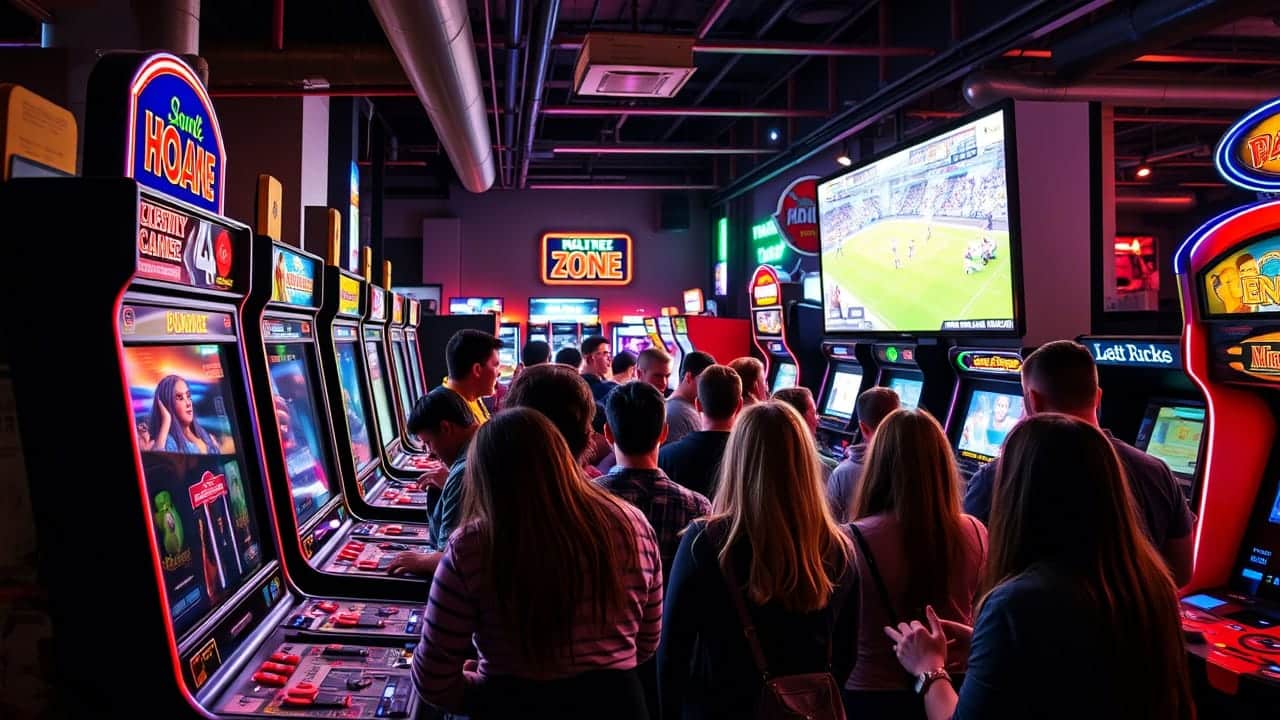Gamified Entertainment: When Video Games and Interactive Systems Collide

Something unusual is unfolding in the entertainment industry. Video games and interactive systems are becoming increasingly intertwined, and no one seems to know how to address it. Imagine this: you’re playing what seems like a typical mobile game, earning coins, leveling up, and chatting with friends — only to realize you’ve been engaging with real money all along. This is the reality of gamified entertainment, transforming the industry into an unexpected challenge.
When Gaming Becomes Costly
It all started innocently enough. Interactive platforms aimed to feel modern, adopting features from video games like vibrant visuals and progress bars. But it didn’t stop there. Some platforms now look so much like traditional games that you have to look closely to notice the difference. Players earn experience points, unlock achievements, complete daily tasks, and enhance their profiles, just like in any modern video game. The key difference? Every point earned, level gained, and task completed could involve real money.
This goes beyond making interfaces appealing. It’s about fundamentally shaping how people perceive interactive entertainment. This shift in mindset is significant, and its full implications are still unclear.
Friends, Followers, and Gaming Buddies
Social media has mastered keeping people engaged, and interactive platforms are following suit. These platforms are more than just activity hubs; they’re full-fledged social networks. Players can follow each other, share successes, form activity groups, and climb leaderboards. Some even allow players to stream their experiences, like Twitch for interactive entertainment. As a result, it’s now common to encounter the odds96 login prompt while browsing social feeds or gaming forums.
This social layer creates a complex dynamic. On one hand, having friends nearby might encourage moderation. On the other, the urge to impress online peers or rise on the leaderboard can drive deeper engagement. The competitive drive behind gaming addiction now intersects with the potential for financial stakes. It’s like mixing energy drinks with alcohol — each element was potent alone, but together, they create something entirely new.
Your Data, Their Treasure
Think about the data your favorite video game collects: what you click, how long you play, your customization choices, and who you play with. Now picture that data in the hands of an entertainment company. Gamified systems track more than just your actions; they know which avatars you prefer, which social features you use, how you interact with game elements, and even how your play style evolves over time.
This enables personalization far beyond basic patterns, like linking interests in different activities. These systems can predict your mood, identify what motivates you, and tailor the experience to keep you hooked.
The Youth Challenge
Let’s be candid: these platforms look just like the games teenagers play daily. The visual style, social features, and progression systems are designed to feel familiar to anyone who’s played a mobile game.
Even with age restrictions, these platforms are forging a cultural link between gaming and interactive systems that didn’t exist before. Young people, accustomed to similar-looking games, can transition to real-money activities without feeling like they’re entering a new realm. The psychological barriers that once separated gaming from interactive systems are being replaced by familiar interfaces that make engagement feel like just another level to unlock.
Industry Convergence
The gaming and interactive entertainment sectors are merging in fascinating ways. Traditional video game companies are incorporating interactive elements to stay competitive, while platform operators hire game designers instead of industry veterans. The result is an ecosystem where industry boundaries are completely blurred.
Some developers create games with built-in interactive features, marketed as “skill-based” but functioning like traditional systems. Others build platforms so game-like that the interactive aspect feels secondary. This cross-pollination creates products that defy existing regulatory frameworks, leaving policymakers and consumer advocates racing to keep up.
Remember when games offered demos? You’d play for free before deciding to buy the full version. Gamified platforms adopted this idea and took it further — straight to real money. Many now offer “practice modes” with virtual currency, seamlessly transitioning into real-money sections.
What’s Next?
History shows that technology outpaces regulation. Virtual reality experiences are already here, with AI guides remembering your preferences and augmented reality overlays turning your local sports bar into a personalized entertainment hub. The technology shaping tomorrow’s entertainment is being developed now, and it will surpass current frameworks. The question isn’t whether these technologies will be adopted, but whether society can establish protections before they become widespread.
Finding a Path Forward
The fusion of gaming and interactive systems isn’t going away. Halting it would be technically infeasible, too lucrative, and too compelling to stop. But that doesn’t mean we’re powerless to shape its trajectory. The key is recognizing that gamified entertainment is a distinct form of entertainment, requiring new approaches to oversight, research, and consumer protection — not just gaming with flashier visuals.
The solution isn’t about stifling innovation or banning features. It’s about understanding the unique psychological landscape created when gaming and interactive systems converge, then crafting policies that safeguard users while preserving the genuine entertainment value these platforms offer. This demands collaboration among industries, researchers, policymakers, and consumers to set standards that work in a digital world where the line between play and payment is increasingly fading.
The collision of video games and interactive systems is happening now, reshaping how entire generations view risk and entertainment. The only unresolved question is whether society can adapt quickly enough to manage the consequences.
Observer Voice is the one stop site for National, International news, Sports, Editor’s Choice, Art/culture contents, Quotes and much more. We also cover historical contents. Historical contents includes World History, Indian History, and what happened today. The website also covers Entertainment across the India and World.
Follow Us on Twitter, Instagram, Facebook, & LinkedIn

